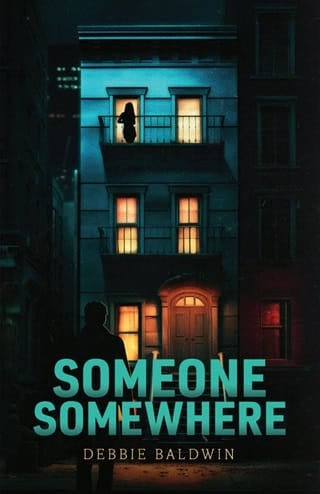Chapter One
September 25
The Outskirts of Paris, France
S hrouded in darkness, Clara Gautreau dangled from the rappelling wire fifteen feet above the warehouse’s cement floor. The timer on the military watch circling her wrist clicked down the seconds. Above her, the vent cover of the air shaft hung from two screws raining dust over her head. The only noise was the gentle whirr from the zip line as she lowered herself. The men’s size ten boots silently touched the ground: the tread and the lifts added three inches to her height. The padding under her clothes added heft. A patch of skin peeked through the intentional tear at the top of her ski mask. These were dangerous people she was robbing. If everything went to plan, they would be looking for a short, bald man.
The art restoration room was a temperature-controlled warehouse monitored with security cameras. Because the pieces were frequently moved and touched, no alarms were connected to individual paintings. Rather, the building itself had been secured with a state-of-the-art system. Even the wide air shafts that ensured proper ventilation had motion and thermal sensors—except for the duct Clara accessed from the roof. She had created a dummy email from the lead art restorer, complaining that a bird had nested in the shaft and was constantly triggering the alarm. The security company agreed to disengage the motion sensors until the problem was resolved.
Entering from the roof also gave Clara access to the building’s generator. If necessary, she could cut the power, disabling the electronic locks that sealed the room. She never orchestrated a theft without a backup plan.
When her feet touched the floor, Clara checked the timer. The green glow of the watch dial was the only light: three minutes, twelve seconds .
Stolen from a Jewish family by the Nazis during World War II, the painting, Renoir’s Girl with a Sunflower , had vanished amid rumors of fires and shipwrecks. Then, in 1964, a British diplomat saw it hanging in the dining room of an Argentinian aristocrat and asked about its provenance. A week after the inquiry, the portrait disappeared again, finally resurfacing in a black-market auction where a notorious financier, Lucien Kite, purchased it for forty-three million dollars.
Lucien Kite.
Clara had been taken aback when she saw the name of the buyer. Kite was infamous in financial circles. He was the number two man at a firm caught running one of the biggest Ponzi schemes in Wall Street history. Lucien Kite had turned informant and ratted out his boss. Somehow, Kite’s deal with the Feds had landed him with hundreds of millions of dollars and the thanks of grateful law enforcement.
The scandal, however, was not the reason Clara knew Kite. She had robbed him once before. Kite diversified his ill-gotten gains—blood diamonds, looted antiquities, stolen art; he seemed to relish purchasing items that had caused suffering. Clara had been happy to return the favor by stealing a Matisse from his summer home.
Now, she was going to relieve him of his latest acquisition.
The first stop for Girl with a Sunflower after eight decades of questionable storage was this unscrupulous French art restorer known for his dubious ethics.
The original owners had been murdered at Auschwitz, but the young subject of the painting had survived and escaped to the U.S. She was ninety-three now. Clara, a graduate student, had heard her speak at a Columbia University art history seminar. This inspiring woman had been robbed of something precious and meaningful. More than a valuable masterpiece, this painting symbolized all that had been taken in the Holocaust.
Luckily, Clara was a thief.
More accurately, she was a returner . There was no question as to who legally owned Girl with a Sunflower . It was simply a matter of locating the work of art. Her research and investigation led Clara to this restoration facility located in a secluded area north of Paris.
Clara paused for a moment. Standing in the center of the expansive space, she listened. She could hear the muffled conversation of two of the guards. Above her, a plane flew over, beginning its descent into Charles de Gaulle. Inside the building, it was silent. Technology could be circumvented; humans were another matter. The guard stationed in this room left once an hour for about seven minutes to have a cigarette with one of the men patrolling outside. Avoiding the exterior guards and breaking into the air shaft to access the restoration room had left her just enough time.
Switching on the headlamp strapped around the ski mask, Clara turned to the center of the darkened space. Three empty easels stood in the center of the room, surrounded by long, paint-stained tables littered with chemicals and tools. A fourth easel held a small painting covered with a linen sheet. Clara’s brow furrowed beneath her mask. It was strange that only one piece of art was sitting out. According to her research, at any given time, this criminal enterprise was smuggling, repairing, and even forging dozens of works.
Outside, one of the guard dogs barked.
Clara had one minute and fifty-two seconds to secure Girl with a Sunflower and get out of the warehouse. The air in the room charged, and a knot formed in her chest. Something wasn’t right. She lifted the sheet, and some of her fear dissipated. The Renoir was perched on the easel, luminous even in the darkness. Her misgivings eased as she imagined returning the masterpiece to its rightful owner.
Clara had just gripped the ornate frame when she heard the heavy, -creaking thud of a lever being thrown, and one after the next, the fluorescent ceiling lights illuminated the room.
 Fullepub
Fullepub 



